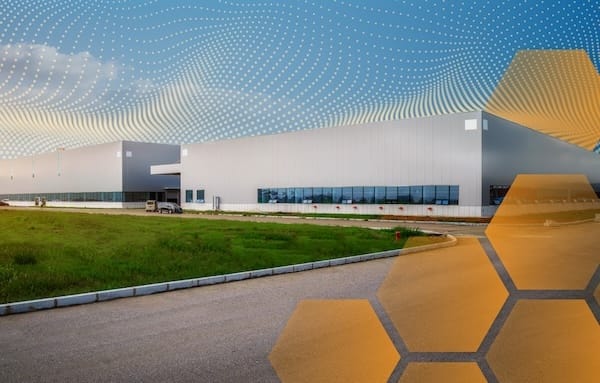- Warehouse Wisdom. Weekly.
- Posts
- Warehouse Wisdom. Weekly. 07/25/2025
Warehouse Wisdom. Weekly. 07/25/2025
Only the most relevant news for SMBs to improve logistics – picked, packed, and delivered without the bias.

Happy Friday!
July 2025 proves that logistics costs only know one direction (up), diplomatic breakthroughs require actual math, and finding workers willing to do physical labor is rarer than parking at Costco on Sunday. US-Japan trade talks cut tariffs from 25% to 15%, ground shipping costs hit 32% above 2018 levels, and manufacturers face a 3.8 million worker shortage making wage inflation look like economic survival, not policy choice.
Stick around for this week's reality checks: diplomatic breakthroughs involving calculators, shipping costs climbing faster than toddlers on playgrounds, and labor shortages turning "competitive wages" into "whatever it takes." Spoiler alert: your supply chain strategy better have backup plans for the backup plans.
Global Logistics
Japan gets a deal, railroads get nervous, and border intel beats spreadsheets

Trade negotiators finally remembered how calendars work. The US-Japan agreement slashes tariffs from 25% to 15% on imports including cars and auto parts, with Japan sweetening the deal through $550 billion in US investments because nothing says friendship like writing big checks. With August 1st deadlines approaching faster than freight trains with broken brakes, both sides needed wins more than perfection—proving that when crisis deadlines approach, compromise beats perfectionism every time.
Meanwhile, supply chain visibility just got an upgrade from the most unexpected place. Border crossing intelligence reveals disruptions weeks before traditional reports catch up. Smart procurement teams now watch truck traffic patterns like day traders watch stock tickers. For smaller operations still relying on monthly reports and gut instincts, this is like bringing sundials to smartwatch conventions—which is supply chain-speak for "real-time beats quarterly when decisions matter."
The ripple effects hit transportation infrastructure like dominoes. Canadian National Railway ditched earnings forecasts and long-term guidance entirely. Why? Because predicting freight volumes during trade wars is like forecasting weather during hurricanes—technically possible but mostly creative writing. When railroads that have moved freight since before your great-grandfather was born admit they can't predict next quarter, trade uncertainty has officially evolved from inconvenience to existential crisis.
Warehouse Tech
Ice cream gets smart, software gets expensive, and humans get robot bosses

If you've ever wondered whether artificial intelligence could predict your ice cream cravings better than you can, the answer is apparently yes, and it's making serious money doing it. Lineage's computer vision systems now scan pallets and predict storage duration while Unilever's weather-based AI boosted ice cream sales 12% in the US by figuring out that hot weather makes people want frozen treats—revolutionary stuff, really. For smaller cold storage operators watching these developments, the message is clear: while you're manually managing freezer temperatures, the big guys are teaching machines to think like meteorologists with MBAs, which is temperature-controlled-speak for "your intuition about seasonal demand just got schooled by algorithms with access to weather data."
Meanwhile, if your software budget has been looking uncomfortably tight lately, you're not alone—but you're also not getting any relief soon. Manhattan Associates just reported record Q2 revenue of $272.4 million with cloud subscriptions surging 22%, proving that when software companies figure out how to make their platforms actually work together, customers will pay premium prices to stop playing integration whack-a-mole. The psychology is simple: operations managers are tired of explaining to executives why their five different software systems can't talk to each other, so they're finally willing to pay for solutions that promise to end the madness—which is enterprise software-speak for "we'll gladly pay more to make the pain stop."
But here's where things get interesting for your long-term staffing plans: Gartner predicts one in 20 supply chain managers will manage robots rather than humans by 2030, with 80% of people engaging with smart robots daily. If you're currently managing a warehouse team, you might want to start thinking about whether your performance review conversations will soon include discussing productivity metrics with employees who never call in sick, don't need health insurance, and consider "overtime" a meaningless human concept—which is workforce evolution-speak for "your next direct report might require firmware updates instead of training seminars."
Rate Your 3PL: The Good, Bad & Ugly
Finally, a 3PL review platform that isn't pay-to-play. We're building a trusted resource where brands and manufacturers can find honest feedback on third-party logistics companies—based on real experiences, not sponsored content.
Whether your 3PL partnership was a disaster or a dream, your insights help others avoid costly mistakes and find reliable operators.
This is peer-to-peer intelligence that actually matters when you're betting your fulfillment on someone else's warehouse.
Logistics Vitals
Manufacturers chase workers north while wages chase reality upward

Manufacturing executives finally did the math on their workforce assumptions. American manufacturers face a 3.8 million worker shortage by 2033, with 1.9 million roles going unfilled because doing physically demanding work for modest pay isn't attracting the TikTok generation. When immigration enforcement creates sudden vacancies, manufacturers either boost compensation or watch production lines move slower than government bureaucracy—which is workforce-speak for "competitive wages became whatever it takes."
Nearshoring accelerates to Mexico and Central America as tariff hedge
Process optimization universal priority regardless of future tariff policies
Labor-intensive industries face sudden vacancies in Southeast and Midwest
Wage inflation accelerating as companies compete for domestic workers
Long-term investment strategies prioritized while maintaining Chinese supplier relationships
Small Parcel Freight
Shipping costs soar, networks merge, and Canada Post discovers customers have options

Shipping costs discovered they only have one gear: expensive. Ground delivery costs climbed faster than teenagers' data usage, hitting 32% above 2018 levels as FedEx and UPS reduced discounts while increasing fuel surcharges. When you control the last mile and customers lack alternatives, why compete on price when you can compete on creative surcharge names? For SMBs shipping regularly, your budget line just became your most unpredictable expense—which is parcel-speak for "cost projections are now expensive guessing games."
Corporate efficiency finally caught up to common sense. FedEx continues its Network 2.0 makeover with 100 station closures after executives realized running two separate networks for the same job is like having two driveways to the same garage. The company merges historically separate Ground and Express operations because someone finally did the math on overlapping routes costing twice as much—which is corporate restructuring-speak for "efficiency beats tradition when shareholders ask uncomfortable questions."
Government postal services learn about competition the hard way. Canada Post faces 63% of small businesses threatening permanent breakups if mail carriers strike again following 19 months of negotiations that have been as productive as screen doors on submarines. The postal service's parcel market share nosedived from 62% to 24% because customers developed trust issues faster than dating app users—which is government postal-speak for "monopolies work until customers realize they have choices."
Marketplace
Walmart gets smarter, ChatGPT gets greedy, and counterfeits get the boot

Retail AI just learned to read minds—sort of. Walmart's global AI overhaul turns TikTok trends into actual products faster than influencers can say "link in bio". The world's largest retailer uses its Trend-to-Product engine to scan social media and generate mood boards because humans are apparently too slow at figuring out what other humans want to buy. For SMBs still debating software upgrades while Walmart teaches machines to predict consumer desires, this is like watching chess grandmasters play against people still learning the rules—because apparently the future belongs to companies that let algorithms do the thinking.
Digital overreach gets a profit motive upgrade. ChatGPT bets consumers trust AI shopping recommendations more than their own impulse control—which, given how people shop online at 2 AM in pajamas, might not be wrong. OpenAI's strategy targets $50 billion from Amazon and eBay's market share by convincing merchants to let AI assistants become sales channels. Small retailers treating ChatGPT as helpful writing tools might want to reconsider whether their digital helper is auditioning for their job—which is AI-speak for "your assistant just applied to become your competitor."
Marketplace policing finally gets transparent. Walmart pulled back the curtain on its counterfeit-hunting operation across 500 million listings because the FTC started breathing down platforms' necks about fake products. For legitimate sellers, this feels like vindication. For anyone who's been creative with product descriptions or brand affiliations, the party's over—proving that transparency only arrives when regulators start asking uncomfortable questions.
Warehouse Quick Deliveries
From Yamaha Outsourcing to Maritime AI
Yamaha hands 175 workers to DHL because outsourcing beats explaining supply chain complexity—shocking
Defense logistics becomes critical war deterrent as adversaries realize sustainment matters more than launch capability
Maritime AI reads contracts faster than lawyers and saves $120,000+ catching missing clauses
Luxury malls discover rich people want experiences as Bal Harbour approaches $1 billion in sales
Lever Style's supply diversification positions them for acquisitions while competitors panic about trade wars
“Every policy shift sends a ripple through the flow of vehicles crossing into and out of the country. If you're paying attention, you can spot the story as it's being written, long before it shows up in the data.”